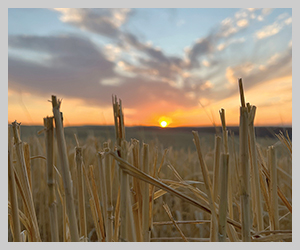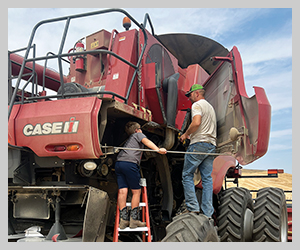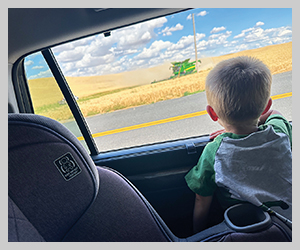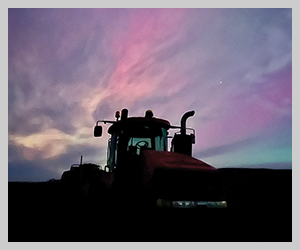
According to the calendar, spring has sprung, but as I write this, we are still freezing up here in Douglas County, so our winter wheat hasn’t woken up yet. Even though the crop is still dormant, I’m needing to make decisions that will greatly affect the upcoming growing season. This year is already starting off with a lot of uncertainties. Some of them are normal—do we have enough moisture? Did the winter wheat get affected by snow mold? But some of them aren’t, especially the uncertainty regarding our inputs.
We’ve already seen a major increase in the cost of glyphosate, and we only have access to a limited amount right now. Our wheat may still be sleeping, but the weeds aren’t, and there’s no question that we need to be thinking about spraying them. Like most farmers I know, we’ll have to find the right balance between using as little glyphosate as we can while still keeping the weeds under control.
Glyphosate isn’t the only product that’s scarce. We don’t know if we’ll be able to get our fertilizer or the parts we’ll need to keep our machinery running. And if we can get them, how much more will it cost us? And that doesn’t even include the fuel we’ll need. One of my colleagues looked at just how much more we are paying for inputs, including fuel. In December, farm diesel was $2.79 per gallon. Today, it’s going for $4 per gallon. NH3 fertilizer per pound in August was $.45. Today’s price is $.97. We’ve budgeted for the price increases (up to a point), but that doesn’t mean much if the products aren’t even available to buy when we need them.
We’ve also had to take into account the increased costs in labor for our service calls. When a mechanical problem can bring your operation to a screeching halt, you don’t have much choice. You make the call and go with it. And then there’s everything that’s happening in Ukraine. I don’t know how that’s going to impact our crop, and so far, we haven’t seen a major move on our wheat prices, so we’ll just have to wait and watch.
It was about this time last year, when we started to get concerned about the lack of moisture, and we all know how last year turned out. We were fortunate enough not to be as badly affected as others by last year’s drought, but it still reduced our yields and tilted our operation a bit. It’s not an exaggeration to say that drought is on our minds every single year.
So, yes, I have concerns. But you know what else I have? Fields full of potential, and that gets me excited. I can barely wait to get out there and help my crop grow. After all, in the words of Will Rogers, a farmer has to be an optimist or he wouldn’t still be a farmer, right? So, here’s to a normal spring and summer with timely rains, access to inputs when we need them and only minor mechanical breakdowns.












